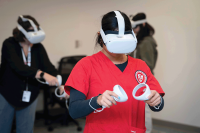Forum highlights nurses’ role in reimagining healthcare and nursing practice.
Nurses excel at adapting to changing circumstances on the frontlines of patient care. With that in mind, speakers at the American Nurses Association’s (ANA) Policy, Innovation, and Advocacy Virtual Forum, “Empowering Nurses to Lead,” emphasized that the COVID-19 pandemic has intensified demands to find solutions in the moment to novel, complex, and quite challenging issues.
That nurses have done so ably poses a unique opportunity for them to accelerate creative problem-solving, advance public policy that supports their priorities, and reshape healthcare delivery and nursing practice and education, according to the event’s presenters.
“We’re at an inflection point right now,” said Judith Persichilli, MA, BSN, RN, commissioner of the State of New Jersey Department of Health. “Through this pandemic, nursing—the most trusted profession—has come out even higher … We can use everything that we’ve learned to change the economic and operational model of nursing into the future.” Persichilli spoke as part of a five-person panel that explored how nurses have responded to the pandemic.
Speakers throughout the day-long event, which took place on September 14 with support from the Irma Lou Hirsch Leadership in Practice and Policy Endowment at the American Nurses Foundation, echoed this sentiment.


“I want you to download a whole new version of nurses, the post [COVID-19] version of nurses,” said keynote speaker Shawna Butler, MBA, RN, a nurse economist and host of the See You Now podcast. “Update your mental icons of what nurses do, have been doing, and can do … double-click on nurses as partners in health transformation and policy formation.”
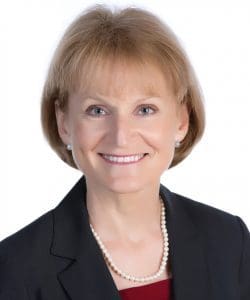

Mary Wakefield, PhD, RN, FAAN, visiting professor at the University of Texas Austin School of Nursing, visiting distinguished professor at Georgetown University, and member of the North Dakota Nurses Association, emceed the forum, which featured more than 30 speakers across 12 sessions.
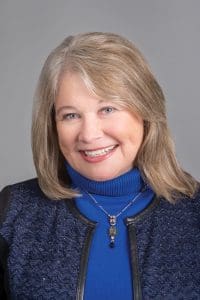

ANA Enterprise CEO Loressa Cole, DNP, MBA, RN, FACHE, NEA-BC, and ANA President Ernest J. Grant, PhD, RN, FAAN, welcomed attendees. Grant noted that the program would spotlight “the incredible leadership of nurses and their roles in driving health policy,” as well as nurse designers and innovators “creating new ways to approach our work and building new care models. The relevance of this content, at this time, cannot be stressed enough,” he said.
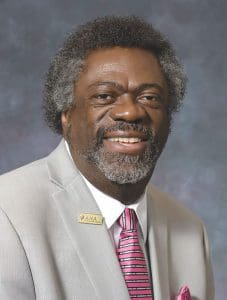

Presenters also urged nurses to tap deeper into their creative potential, prepare for long-duration efforts to accomplish their goals, and take part in a bold revision of nurse practice and healthcare. One session showcased three NursePitch™ innovations: Nurse Disrupted, Lavender, and the National Center for Complex Health and Social Needs. A partnership between ANA and HIMSS, NursePitch highlights new and original work led by nurses. Nurse Disrupted developed a turnkey video station—The Care Station—that connects clinics with remote providers to enable patients in vulnerable populations to access the clinical services they need. Lavender is a nurse-owned and nurse-led online psychiatry and therapy office. The National Center for Complex Health and Social Needs works closely with sites across the country to build competencies in and co-design models for caring for complex populations, such as individuals dealing with homelessness and substance abuse disorder.


Reaching vulnerable populations
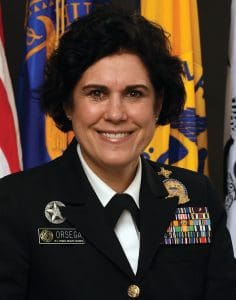

Keynote speaker Rear Admiral Susan Orsega, MSN, FNP-BC, FAAN, FAANP, director of commissioned corps headquarters at the U.S. Public Health Service and a member of the Maryland Nurses Association, called for more nurse-led clinics as a means of engaging deeply with and improving health outcomes among vulnerable populations. “All of us need to work across all sectors … together in addressing chronic diseases, poor health habits, and the rise in unhealthy behaviors that are leading America down a path of reduced quality of life. These are small but powerful inroads in driving us toward a healthier nation,” she observed.
Sheldon Fields, PhD, RN, CRNP, FNP-BC, AACRN, FAAN, FAANP, FNAP, associate dean for equity and inclusion at Penn State University and an ANA-New York member, laid out a panoply of actions for nursing schools and other organizations to take for meaningful progress toward diversity, equity, and inclusion; reduced health disparities; and improved health outcomes across society. “The way forward is through centering the work in health equity and anti-racism that nursing can and should be doing,” he observed. “Nursing, of any profession, is in a unique position to put forth an anti-racist initiative that will help us to ensure diversity and impact our entire healthcare system.”
New approaches to nursing education
The pandemic has made deep marks on healthcare, and a collaboration between ANA, Johnson & Johnson, and the American Organization for Nursing Leadership (AONL)—“Accelerating Nursing, Transforming Healthcare”—sought nurses’ and nurse leaders’ perspectives about how COVID-19 has driven change, factors that have enabled this change, and how to maintain and even accelerate this momentum.


One element should involve an expanded view of nursing education and professional pathways within nursing, according to ANA Enterprise Chief Nursing Officer/EVP Debbie Hatmaker, PhD, RN, FAAN, who spoke as part of a panel with Lynda Benton, senior director of global corporate equity and partnership at Johnson & Johnson Services, and Robyn Begley, DNP, RN, NEA-BC, CEO of AONL. “The emphasis need not always be on keeping nurses at the bedside. There should be flexibility ingrained in education and professional development so that nurses can intrinsically do more than one job and be placed in positions across the care continuum,” she said.


New momentum for telehealth
The pandemic also has engendered changes and experimentation in public policy, such as expanded use of telehealth and movement toward full practice authority for advanced practice RNs (APRNs). Telehealth blossomed during the pandemic as many care sites closed and as patients and providers sought to minimize potential exposure to COVID-19. “It was utilized across every specialty … acute, chronic, preventive health,” said Kristi Henderson, DNP, NP-C, FAAN, FAEN, senior vice president of the Center for Digital Health, CEO of MedExpress at Optum Health/United Health Group, and a Texas Nurses Association member. She spoke along with Antonette Montalvo, MSN, BA, PNP-BC, RN, owner of Antonette Montalvo Consulting and Coaching Services, during the session, “Transformation Across Virtual Care and Telehealth.”
“We really truly had a shutdown of our health system and used [telehealth] for everything,” Henderson said. This trial by fire demonstrated many ways telehealth could be used effectively, she added. From this COVID-19–inspired opening, she sees a dramatic rethinking of the role telehealth might play going forward—and a crucial opportunity for nurses. “We could connect people in a way we were never able to before because they were in one physical location and only the people that were in that clinic could help that individual. Now we’re able to bring in … care teams across the spectrum.”
Nurses, Henderson added, “know how the flow needs to be from a patient’s perspective. They’ve been the ones with these deep relationships to understand readiness of individuals to accept [the use of telehealth]. So nurses having a voice in designing [this new paradigm] is incredibly important.”
A long policy and advocacy journey
The pandemic also led many states to temporarily waive or suspend practice collaboration, supervision, or protocol requirements. However, some already have reimposed restrictions while others didn’t change their regulations, meaning the fight for full practice authority will go on. Speakers, including Minnesota State Senator and Minnesota Organization of Registered Nurses member Erin Murphy, MA, RN, FAAN, detailed the arduous process of achieving legislative and policy wins on this issue and others.
Murphy, who served 12 years in the Minnesota House before being elected as senator, described her initial attempt in the House to change licensure laws and scope of practice regulations as a “miserable failure.” However, assembling a “broad and strong” coalition of APRNs, sharing research findings demonstrating the safety of APRN care models, and working diligently through the legislative process led to passage of full practice authority laws in Minnesota in 2013, she explained.
“This is a really powerful story of the value of nurses coming together around an idea … a proof point that when we are organized together, when we use the good data and research that we generate ourselves, and when we have a compelling reason that is in the interest of the public, we can make real significant change,” Murphy asserted. She spoke as part of a five-person panel on “Advancing Innovation in Health Care: Partnerships to Achieve Shared Goals.”
Collective action to influence policy
Speakers throughout the day emphasized the power of nurses acting collectively to advance policy and innovation priorities. For instance, Winifred Quinn, PhD, director of advocacy and consumer affairs at AARP’s Center to Champion Nursing in America, not only encouraged nurses to work in coalitions but also “to think about and verbalize really what the outcomes of the policies are on the patient and the family that they’re advocating for,” she suggested. “The more that nurses can speak to what the outcomes of their requests are the more powerful argument they could make to policymakers.” Quinn, joined by Jean Moody-Williams, MPP, RN, deputy director of the Center for Clinical Standards and Quality at the Centers for Medicare & Medicaid Services, addressed Medicare and Medicaid issues.
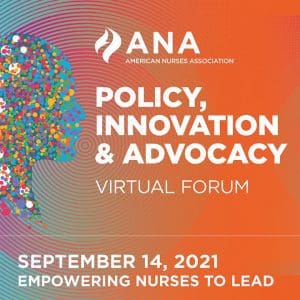

She added, “We have a real responsibility as a country to build our healthcare system to work better for providers and nurses.” Davis was part of the panel on “Advancing Innovation in Health Care: Partnerships to Achieve Shared Goals.”
Across the day’s lineup, the presenters emphasized this pivotal moment of change and exceptional opportunity for nurses to envision and enact innovations for the benefit of their patients and practice. Though doing so might seem daunting, speaker Lori Skinner, DNP, RN, clinical innovation portfolio manager at Medica, encouraged nurses to persevere.
“Innovation can be messy and … sometimes overwhelming, and a little scary to get into,” she acknowledged as a member of the panel along with Murphy and Davis. The fear comes from doing a considerable amount of work then perhaps having to redo it. However, she noted, “A key point is when you evaluate and say, ‘It’s okay. We’re going to rip it up and start over again.’ And the next model might be even better.”
— Genna Rollins is a writer-editor at ANA.


















